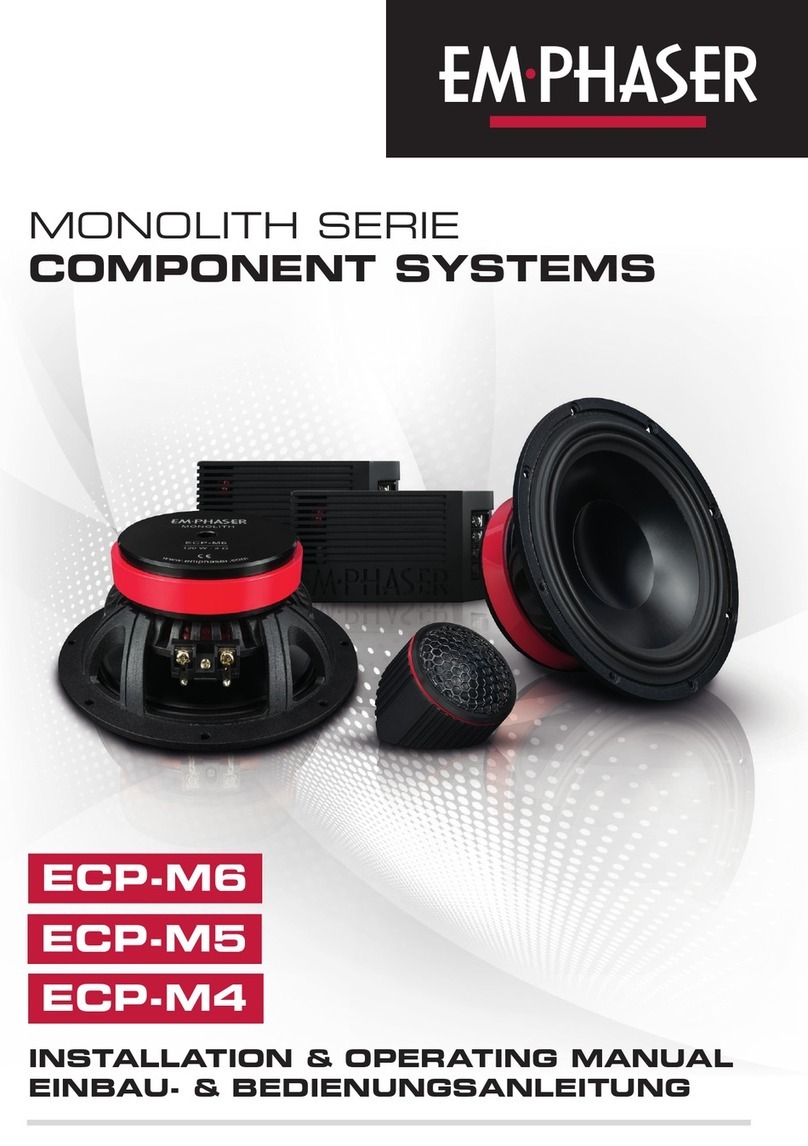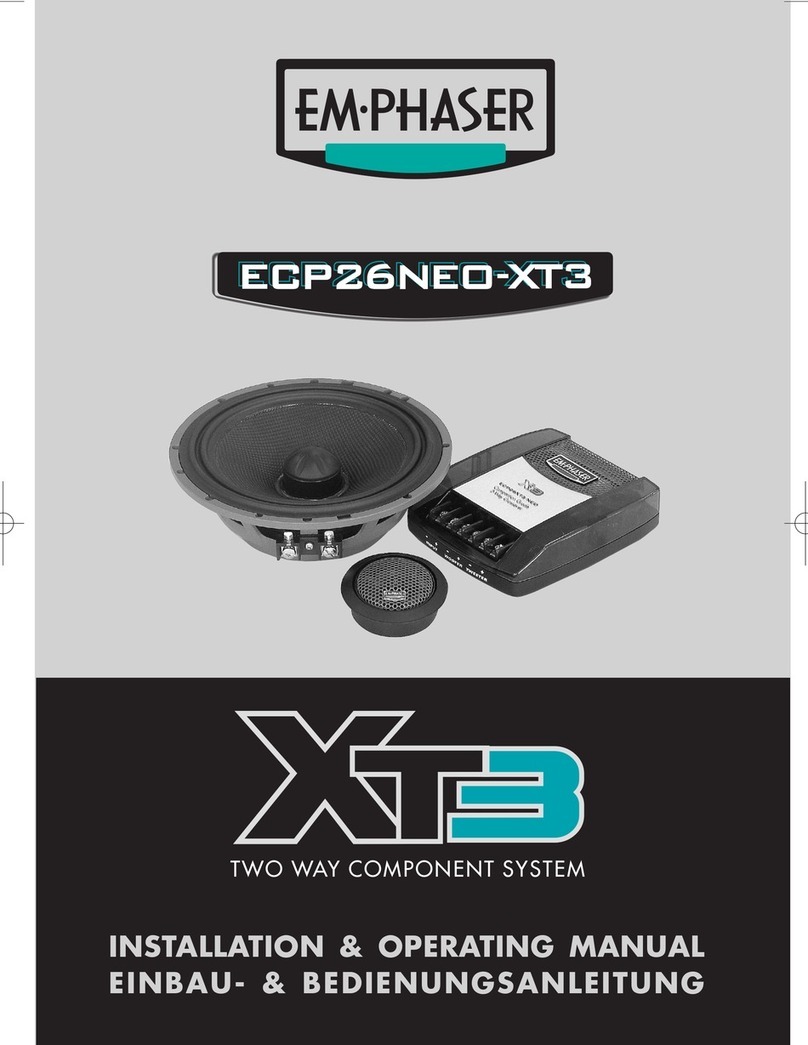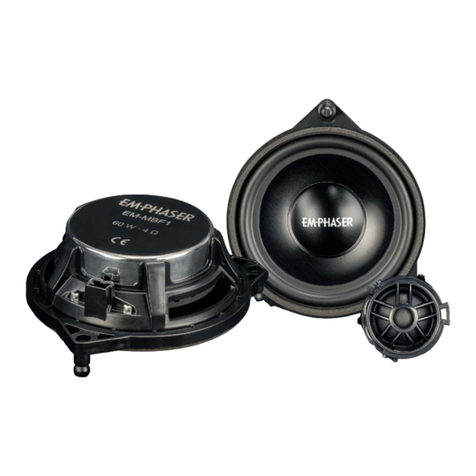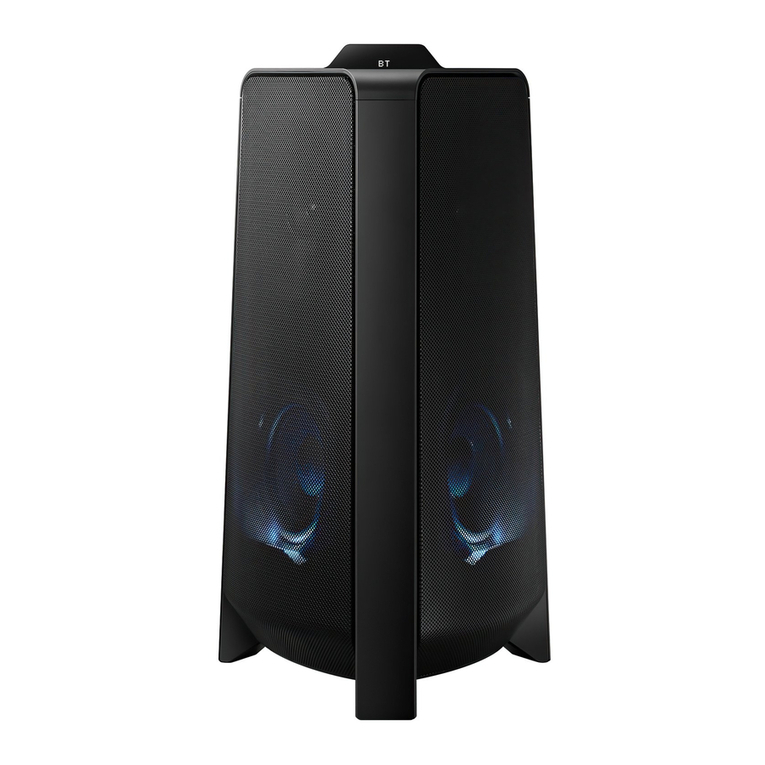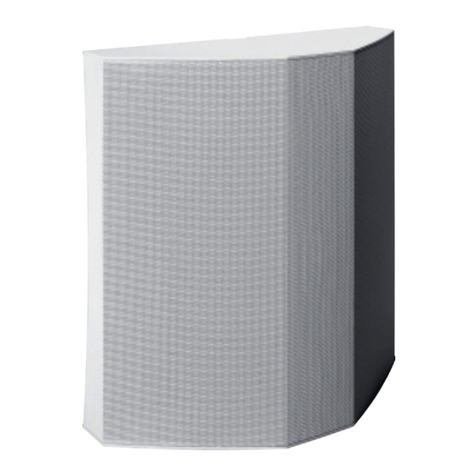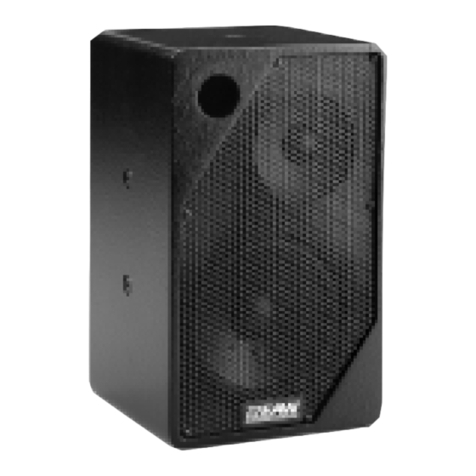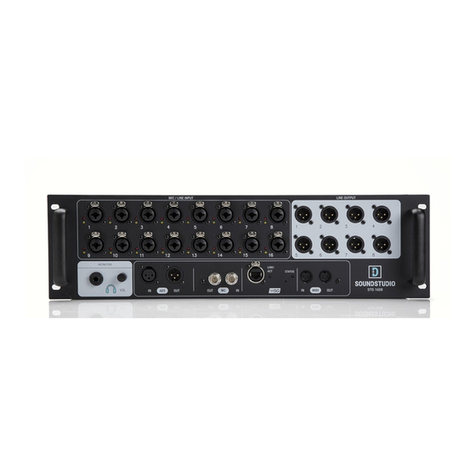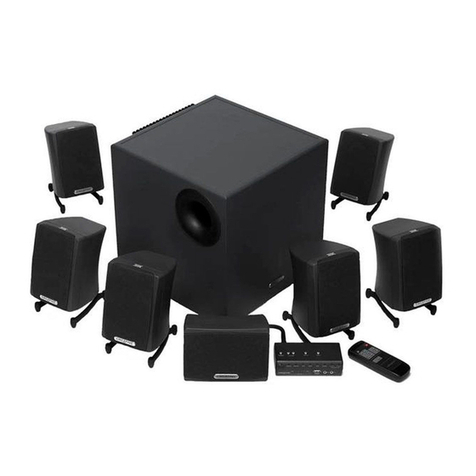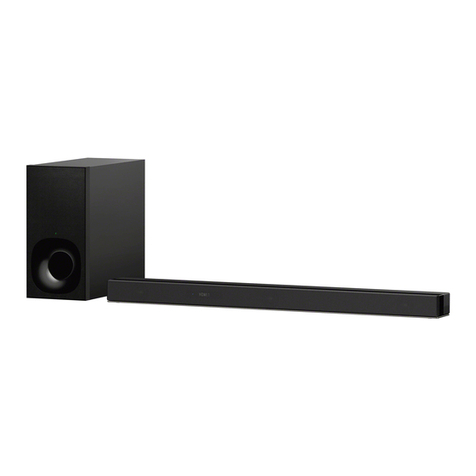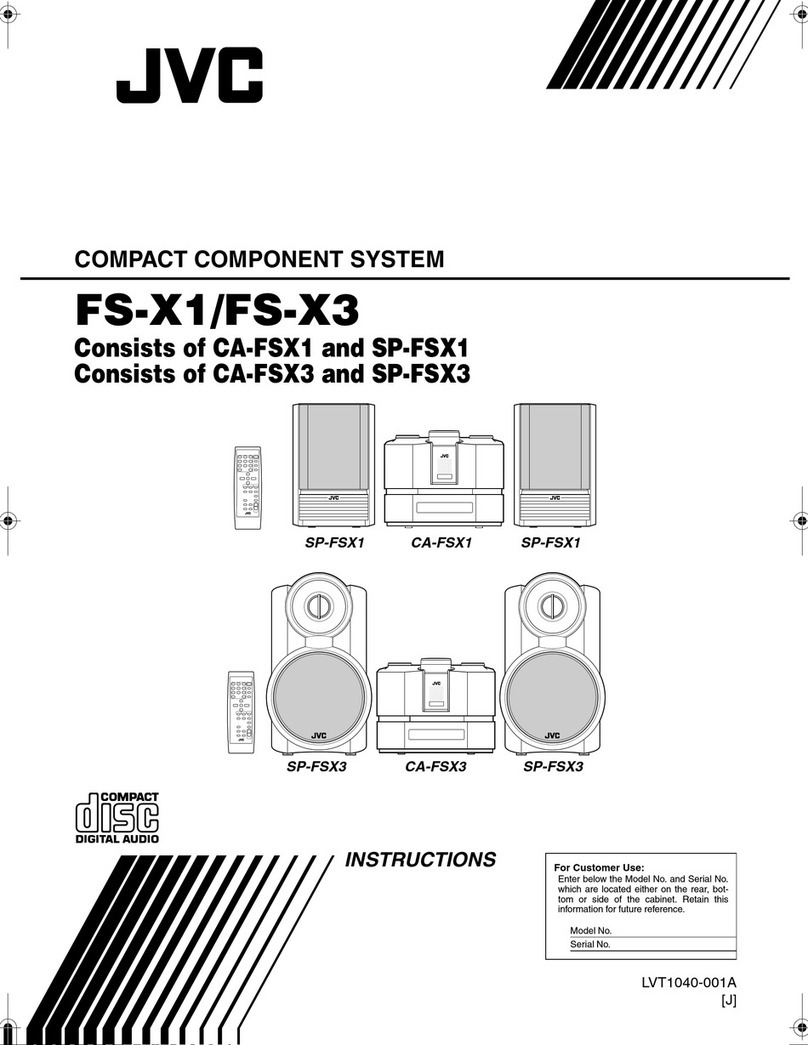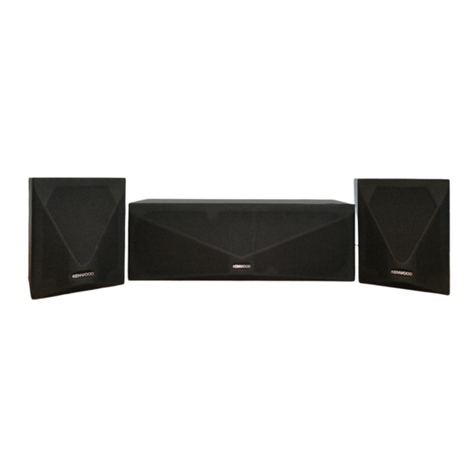EMPHASER EA-D8 Installation instructions

INSTALLATION & OPERATING MANUAL
EINBAU- & BEDIENUNGSANLEITUNG
8-CH DIGITAL SOUND PROCESSOR
EA-D8

2 3
Thank you for purchasing this EMPHASER amplifier!
To maximize the performance of this Digital Sound Processor and your complete car audio
system install, we recommend that you acquaint yourself thoroughly with all technical features
and controlling options of this EMPHASER device. Please read this manual carefully, before
attempting the installation.
If, after reading this manual, you still have questions regarding functions or the installation of
the amplifier, we recommend that you consult your dealer.
TECHNICAL SPECIFICATIONS EA-D8
Frequency response: 20Hz ~ 20 kHz
Audio sampling frequency: 192 kHz
Distortion: 1 KHz <0.001%
Supply voltage range: 9V - 15V
Signal to noise ratio: > 96 dB
Dynamic range: > 100 dB
Standby current: < 0 mA
Dimensions (WxHxD): 165 x 48 x 126 mm
KEY FEATURES
■ 8-channel Smart Digital Pre-Amplifier with iOS or Android App controlled audio DSP
functions
■ DSP-controlled 8-channel Preout including REM out to control connected amplifiers
■ Bluetooth Audio Streaming with automatic source switching
■ Plug’N’Play quick installation system via optional vehicle brand and model specific ISO
wire harness
■ Auto-Turn-On function
SAFETY INSTRUCTIONS
nDo not turn on any function which may distract you while driving the vehicle.
Functions requiring sustained attention must only be used when the vehicle is at a
complete standstill. Make sure to always stop your vehicle in a safe place before
operating these functions. There is a risk of causing an accident.
nKeep the volume at a low level to be able to hear exterior noises while driving
the vehicle. There is a risk of causing an accident.
nDo not open the amplier or undertake any modication of the product. There
is a risk of accident, re or electric shock.
nOnly use this amplier with 12V mobile applications. Any other use other than
the use for which this product has been designed may lead to re, electric shock or
injury.
nUse fuses of the correct amperage. There is a risk of re or electrocution.
nDo not obstruct radiators and/or vents. Internal overheating may occur and cause
a re.
nEnsure all connections are properly made. Check the section of cable and the
type of cable if it does not correspond with the use. There is a risk of re, injury and/
or damage to the product.
nDo not use nuts or fasteners part of the steering or braking systems for ground
connection. The fasteners and nuts used for the brake and steering systems (or any
other security system) as well as various tanks must never be used for grounding.
Use of these parts as ground may deactivate the vehicle’s control system and cause
a re or other technical problem.
nKeep all small objects which could be swallowed, such as the fasteners and
screws, out of the reach of children. Swallowing such objects may cause serious
injuries. In the event of swallowing any of these objects, immediately seek medical
advice.
nBefore starting the installation, disconnect the negative terminal of the battery
to avoid any risk of injury, re or damage to the equipment.

4 5
CONNECTIONS + CONTROLS EA-D8
INPUTS + OUTPUTS
1 RCA INPUTS 1/2 | 3/4 | 5/6 CH
Low-level stereo RCA signal inputs for connection to head-unit.
2 RCA OUTPUTS 1/2 | 3/4 | 5/6 | 7/8 CH
Low-level stereo RCA signal outputs for connection to the amplifier.
3 INPUT GAIN CONTROL 1/2/3/4/5/6-CH
Input gain potentiometer to match the output voltage of the head-unit to the
pre- amplifier’s input.
4 Bluetooth antenna
Socket to connect the supplied Bluetooth antenna.
5 Auto-Turn-On Operation Mode
To choose if the devise turns on by DC-offset signal (Signal Turn On) or by remote
signal from head unit (Remote Turn On). When choosing “Signal Turn On” the remote
wire need to be disconnected.
6 POWER LED
LED to show proper operating status of the amplifier by green illumination. Protect
state of amplifier is signaled by the red LED.
7 High Level input and power input connector
Terminal to connect the amplifier to both the +12V, chassis ground and remote signal
from head-unit and the speaker input signal from the head-unit’s output.
1* In some cases with old headunits the Auto-Turn-On
function cannot work. If you meet this problem, please
just put the separately provided wire “ACC-IN” into the
connector of the connection cable and connect it to
ACC/Amp Remote of the car stereo or another cable
which will provide +12 V only when the car stereo is
turned on. Secondly select “REMOTE TURN ON” on
the remote switch.
2* REM-Out: Connect this wire to the remote input of the
separate amplifier.
WIRING DIAGRAM EA-D8
20
1* ACC-in 11 GND
2* Rem-out 12 +B
3RR-in 13
4RR+in 14
5RL-in 15
6R L+ i n 16
7FL-in 17
8F L+ i n 18
9FR-in 19
10 FR+in 20
Speaker
EA-D8
EA-D500
EA-D8
EA-D500
LINE IN
CH1
CH2
CH3
CH4 CH6
CH5 CH1
CH2
CH3
CH4 CH6
CH5 CH7
CH8 POWER PROTEC T
SIGNAL
TURN ON
REMOTE
TURN ON
FUSE
(30A) BATT.GND ANT
CH4-
IN
CH4+
IN
CH3-
IN
CH3+
IN
CH1-
IN
CH1+
IN
CH2-
IN
CH2+
IN
CH4-
OUT
CH4+
OUT
CH3-
OUT
CH3+
OUT
CH2-
OUT
CH2+
OUT
CH1-
OUT
CH1+
OUT
REM
OUT
REM
IN
NC NC
CH5+
OUT
CH6+
OUT
CH8+
OUT
CH6+
IN
CH5+
IN
CH5-
IN
CH6-
IN
CH8-
OUT
CH7-
OUT
CH7+
OUT
CH6-
OUT
CH5-
OUT
SPEAKER
INPUT/OUTPUT
LINE OUT
EA-D800
EA-D800
12
EA-D8
EA-D500
EA-D8
EA-D500
LINE IN
CH1
CH2
CH3
CH4 CH6
CH5 CH1
CH2
CH3
CH4 CH6
CH5 CH7
CH8 POWER PROTEC T
SIGNAL
TURN ON
REMOTE
TURN ON
FUSE
(30A) BATT.GND ANT
CH4-
IN
CH4+
IN
CH3-
IN
CH3+
IN
CH1-
IN
CH1+
IN
CH2-
IN
CH2+
IN
CH4-
OUT
CH4+
OUT
CH3-
OUT
CH3+
OUT
CH2-
OUT
CH2+
OUT
CH1-
OUT
CH1+
OUT
REM
OUT
REM
IN
NC NC
CH5+
OUT
CH6+
OUT
CH8+
OUT
CH6+
IN
CH5+
IN
CH5-
IN
CH6-
IN
CH8-
OUT
CH7-
OUT
CH7+
OUT
CH6-
OUT
CH5-
OUT
SPEAKER
INPUT/OUTPUT
LINE OUT
EA-D800
EA-D800
4765
3
Side panels

67
AMPLIFIER MOUNTING
Attention! For your own safety, disconnect the negative battery terminal (GND) or re-
move the main fuse in the positive power cable near the car battery, before you start
any wiring work!
Before you proceed to install this EMPHASER amplifier, it is recommended to map out the
complete system and the respective wiring required. Consider all additional electrical require-
ments and accessories, such as power cables, interconnect cables etc., to complete the install.
Please note that - because of possible interference problems with the existing car electrics
and electronics - especially the routing of the signal cables and the chassis ground connec-
tion will have a profound impact on the trouble-free (noise free!) operation of the amplifier.
The mounting location should be carefully selected and in the interest of passive driver and
passenger safety, the amplifier must be securely mounted. Make sure that there is no wiring
harness, fuel tank etc. behind or below the mounting surface that may be damaged by the
drilling of the holes for the amplifier mounting screws. After installation, there should be a
clearance of at least 5cm to all sides including the top of the amplifier heatsink. Make sure
the unit is not exposed to direct sunlight, humidity, water, oil or spill of other fluids that may
enter the amplifier.
Once the location where the amplifier will be mounted is defined, use the unit as a template
for the marking of the mounting holes with pencil or felt-tip marker. The mounting holes should
be pilot-drilled, using a 2,5mm drill bit. Bolt the amp down.
Important! There must not be a direct contact of the amplifier heatsink, bottom panel
or any other metal part of the amplifier to the vehicle metal panel! Electrical ground-
loops will cause audible hum!
WIRE ROUTING
PLUG AND PLAY CABLES
Before you start with the installation, make sure you know the security code of your headunit
(if applicable). Remove the headunit from the dashboard and disconnect the main wire. Find
a place for the EA-D8 and connect the provided (or optionally available car-specific) wire to
the amp. Connect the wire to the headunit. Install the headunit back in the dashboard.
RCA & REMOTE WIRES
You only need to read the following part about RCA and remote wire when you intend to not
use the provided high-level input connector. Do not use high-level and low level RCA inputs
together at the same time.
For best interference free transmission of the music signal, use double or triple shielded RCA
interconnects only. Twisted pair Interconnects offer excellent noise rejection as well. Route
the RCA interconnects away from potential sources of Interference, such as engine comput-
ers, gas pumps, etc.
Carefully run the audio signal interconnects and the remote wire from the head unit or dash-
board to the amplifier. As mentioned before, the audio signal cables should always be routed
completely separate from the power cables. Connect the remote (turn on/turn off) lead to the
respective input terminal of the amplifier and to the remote output of your head-unit. Now you
can connect the RCA interconnects to the respective outputs of your head-unit and to the
inputs of the amplifier. Pay attention to connect the stereo interconnects correspondingly, left
is 1CH and right is always 2CH a.s.o.
INPUT GAIN ADJUSTMENT EA-D8
To reach a maximum in dynamic response from each individual head-unit/amplifier/speaker
combination, it is important to set the respective input sensitivity controls („GAIN“) of all chan-
nel pairs correctly.
Before you start, you MUST set all tone controls (Bass, Mid, Treble, Loudness etc.) and the
fader on the head unit to their neutral or center positions.
Now turn all input gain controls of the installed amplifiers anti-clockwise to their minimum
positions and start with the channel pair that drives the subwoofer system.
SUBWOOFER CHANNEL(S)
Set the volume control of your head-unit to approximately ¾ of full volume, while playing a
dynamic piece of music. Slowly increase the input gain control of the channel pair driving the
subwoofer(s), by turning the GAIN control clockwise. Increase clockwise until the bass starts
to distort. Reduce the main volume level of your head-unit to a medium listening level. Proceed
with further channels, if applicable.
SATELLITE CHANNELS
Slowly increase the input gain control of the channel pair driving the satellite system, by turning
the GAIN control clockwise. Increase clockwise until you reach a good tonal balance with a
slight emphasis of the bass range. Repeat for all further channels.
FINE TUNING OF ALL CROSSOVER FREQUNCY POINT SETTINGS
Finally you can attempt to fine-tune the H.P.F. and/or the L.P.F. crossover frequencies on your
amplifier setup, to reach the maximum tonal balance and channel integration of all loudspeak-
ers connected to your car audio system.

8 9
For Android phones only:
1. Download the EA-D8_V1.0.apk by scan of the QR code or download from the Axton
website www.emphaser.com
2. Install EA-D8_V1.0.apk to your Android smart phone.
3. Turn on Bluetooth on your mobile and search “EA-D8”, then connect to it with paring
code 1234.
4. Open EA-D8 app and click the “Connect” button to connect your mobile to the
amplifier.
For iOS smart phones only:
1 Visit the Apple AppStore, search for „EA-D8“ and install the app.
2 Turn on Bluetooth.
3. Open the app and press the “Connect” button in order to connect the amp with
the app.
Scan to download and
install the app from the
Apple AppStore
Scan to download and
install the app from the
EMPHASER homepage
APP INSTALLATION EA-D8
Favorites
Press the star button at the top right,
and select one of the favorites 1 – 5.
FUNCTIONS
Connection to the smart mobile
Start the app and touch the “Connect”
button . After the connection
procedure is done successfully, the app
downloads the current settings from the
amplier.
UI: Connecting
Start the app
and touch the
“Connect”
button
Favorites:
Star button top
right
UI: Connecting
Open the Bluetooth settings on your smartphone and search for „BT Audio“ device. Press
“connect” to get the amp paired with your mobile. When you start playing music on your
mobile, the amp automatically mute the signal from your car stereo. Please note that you
then also cannot hear any warnings or navigation notes from your car stereo.
BLUETOOTH AUDIO STREAMING

10 11
Output Settings
Output Settings
Output Settings
This menu provides the substantial Input/
Output management. On the page main
you determine the function of the respective
channel. Touch the button of the channel to
open the selection and chose the function.
In the next step you assign that output chan-
nel the according input channel. Touch “In-
put C>>” to open the input menu. By default
the CH1 output is related to the CH1 input
(and so on). But you can also feed the CH1
output with an input channel of your choice
by moving the related slider.
Some factory systems do not provide full
signals per channel, but divide the high and
low frequencies signals into different chan-
nels. In such a case, you can use the input
management to merge both signal compo-
nents and forward them to one common
output.
Crossover
Crossover
In this menu you can assign a frequency
band to the connected speakers that cor-
responds to their recommended operat-
ing range. You can chose to adjust each
channel separately, or combine each pair
of channels (Button “Combine” in the upper
right corner).
In the left half of the diagram you can set
the break frequency of the high pass lter
as well as its slope. In the right half are the
break frequency and slope of the low pass
lter. The red line shows the set slope of
the lter. "Bypass" means that the signal is
unltered and contains all frequencies.
The lter settings also apply to the corre-
sponding preamp outputs.
When you have done all settings, go back
to the main menu, and touch the "Save to
Amp" button to transfer the settings to
the amplier. During the saving process do
not switch off the amplier as this may lead
to malfunction and/or damage. You can
also save the settings on your smartphone.
To do this, press the "Save on Phone" but-
ton , and enter the desired lename.
Crossover

12 13
Time Alignment
Press the "Time Alignment" button to go
to the menu. In this menu you can apply a
time delay to the speaker signal to simu-
late an ideal listening position. Note the
distance between your listening position
and each speaker. Choose the most distant
speaker as the reference for the other
speakers.
With the aid of the following example,
calculate the values for your speakers:
(FL) front left is 0.80 cm from the listening position
(FR) front right is 1.40 cm from the listening position
(RL) rear left is 0.50 cm from the listening position
(RR) rear right is 1.30 cm from the listening position
(SubW) subwoofer is 2.00 cm from the listening position
Value for FL = SubW – FL → FL = 2.00 – 0.80 cm
Value for FR = SubW – FR → FL = 2.00 – 1.40 cm
Value for RL = SubW – RL → RL = 2.00 – 0.50 cm
Value for RR = SubW – RR → RR = 2.00 – 1.30 cm
SubW remains at the value "0"
Time Aligment
Note the distance
between your listening
position and each
speaker
Noise Gate
Noise Gate
function
Noise Gate
The Noise Gate function is dedicated to
reduce the back ground noise of the head
unit. If back ground noise of the head unit
is audible, increase the Noise Gate level
by sliding to the left until you cannot listen
the noise anymore.
EQ Settings
In the EQ menu you can build your sound
according to your preferences.
With the provided parametric 7-band EQ
you are able to correct the frequency
response of each channel with pinpoint
accuracy
EQ Setting

14 15
EQ Setting Combine
In the line "f0" tap on the band you want to
adjust. A pop-up window appears to enter
the value of the center frequency you want.
Conrm with "OK" .
In the line "Q" tap on the band you want to
adjust. A pop-up window appears to enter
the value of the quality factor you want.
Conrm with "OK" . Instead you can
also touch “-“ or “+” to adjust the Q factor in
0.1 steps.
The quality factor (Q factor) determines the
effect of the EQ lter (bandwidth) on the
frequency band around the chosen center
frequency f0.
Example1: f0 = 1000 Hz
desired bandwidth of EQ lter = 1000 Hz
(i.e. 500 Hz – 1500 Hz) Q = 1
Example2: f0 = 1000 Hz
desired bandwidth of EQ lter = 200 Hz
(i.e. 900 Hz – 1100 Hz) Q = 5
Q factors from 0.3 to 9.9 are possible.
If required, you can combine each
pair of channels. Simply use the “Combine”
button in the upper right and chose the
respective channels.
If you just want to try out the presets and
then go back to your personal preferences,
exit without saving the app, and then
restart. The app will then load your saved
preferences from the amplier.
Dynamic Bass
Located in the EQ menu, the “Bass” slider
is a very effective way to increase bass per-
formance without overloading the speakers.
Level at “0” = no Dynamic Bass function
active.
Level at “1” to “20” = the higher the
value the higher the bass increasing.
Simultaneously a strong subsonic lter
is enabled to protect the speakers from
deepest bass frequencies to avoid damage
to them.
Gain
Gain
In this menu you can make the following
settings for each individual channel (from
left to right): sound level, phase and mute.
When you have done the preferences,
go back to the main menu, and touch the
"Save to Amp" button to transfer the
preferences to the amplier. During the sav-
ing process do not switch off the amplier
as this may lead to malfunction and/or dam-
age. You can also save the preferences on
your smartphone. To do this, press "Save
on Phone" , and enter the desired
lename.
Save to Phone
You can save the settings on your smartphone. To do this, press "Save on Phone" ,
enter the desired lename, and conrm with "OK".
Load
Shows a list of les saved on the smartphone. Touch the desired setup to load. If you now
want to save the loaded setup permanently on the amp, press "Save to Amplier" .
Save to Amp
When you have done the settings, touch the "Save to Amplier" button and chose the
favorite to transfer the settings to the amplier. During the saving process do not switch
off the amplier as this may lead to malfunction and/or damage.

16 17
Wir danken Ihnen für den Kauf dieser EMPHASER Endstufe.
Damit Sie die Wiedergabequalität und die Leistungsfähigkeit dieses Verstärkers voll aus-
schöpfen können, bitten wir Sie, sich eingehend mit den Möglichkeiten und technischen
Features dieses Verstärkers vertraut zu machen. Lesen Sie deshalb die nachfolgenden
Abschnitte sorgfältig durch und bewahren Sie diese Bedienungsanleitung auf.
Falls Sie im Anschluss weitergehende Fragen zu den Funktionen oder dem Anschluss
dieser Enstufe haben, kontaktieren Sie ihren Händler.
TECHNISCHE SPEZIFIKATIONEN EA-D8
Wiedergabebereich: 20Hz ~ 20 kHz
Audio Sampling Frequenz: 192 kHz
Spannungsbereich: 1 KHz <0.001%
Versorgungsspannung: 9V - 15V
Störabstand: > 96 dB
Dynamikumfang: > 100 dB
Ruhestrom: < 0 mA
Abmessungen (B x H x T): 165 x 48 x 126 mm
HAUPTMERKMALE EA-D8
n 8-Kanal Smart Digital Pre-Amplier mit iOS oder Android App kontrollierten Audio
DSP Funktionen
nDSP-kontrollierter 8-Kanal Vorverstärkerausgang inklusive Remote-Ausgang zum
Ansteuern angeschlossener Verstärker
nBluetooth Audio Streaming mit automatischer Quellenumschaltung
n Plug’N’Play Installation mit optionalen fahrzeugspezischen Anschlusskabeln
n Auto-Turn-On Funktion
SICHERHEITSHINWEISE
nBedienen Sie keine Funktion, die Sie während der Autofahrt ablenken könnte.
Funktionen, welche Ihre besondere Aufmerksamkeit erfordern, dürfen ausschliesslich
genutzt werden, wenn das Fahrzeug stillsteht. Stellen Sie sicher, dass Sie an einem
sicheren Ort parken, bevor Sie das Gerät bedienen. Es besteht sonst ein hohes
Risiko eines Unfalls.
nHalten Sie die Lautstärke auf einem Level, wo Sie noch Geräusche von aussen
wahrnehmen können. Es besteht sonst ein hohes Risiko eines Unfalls.
nÖffnen und/oder modizieren Sie das Produkt nicht. Es besteht sonst ein hohes
Risiko eines Unfalls, Feuers oder elektrischen Schlags.
nDer Verstärker ist ausschliesslich für Anwendungen in PKW mit einem 12 Volt
Bordnetz mit (-) Masse vorgesehen. Es besteht bei anderweitiger Verwendung ein
hohes Risiko eines Unfalls, Feuers oder elektrischen Schocks.
nVerwenden Sie für den Masseanschluss keine Mutter oder Befestigungen
der Bremse, Lenkung oder des Tanks. Die Nutzung dieser Teile kann die
Sicherheitseinrichtungen des Fahrzeugs deaktivieren oder zu Fehlfunktionen führen.
Es besteht daher ein hohes Risiko eines Unfalls oder Feuers.
nVerdecken oder behindern Sie keine Öffnungen oder Ventilatoren. Durch
Überhitzung besteht die Gefahr eines Feuers.
nStellen Sie sicher, dass alle Anschlüsse korrekt sind. Es besteht sonst ein hohes
Risiko eines Unfalls, Feuers oder elektrischen Schocks.
nHalten Sie kleine Objekte, wie zum Beispiel Schrauben und Muttern von
Kindern fern. Ein Verschlucken solcher Objekte kann schwerwiegende Folgen für
die Gesundheit haben. Im Fall eines Verschluckens suchen Sie umgehend ärztliche
Hilfe.
nTrennen Sie vor der Installation den Minus-Pol von der Batterie, um
Verletzungen oder Beschädigungen am Produkt oder Fahrzeug zu vermeiden.

18 19
ANSCHLÜSSE + BEDIENUNGSELEMENTE EA-D8
EINGÄNGE + AUSGÄNGE
1 RCA INPUTS CH 1/2 | 3/4 | 5/6
Cinch Eingangsbuchsen für den Anschluss der Cinch Ausgänge des Steuergerätes.
2 RCA OUTPUTS CH 1/2 | 3/4 | 5/6 | 7/8
Cinch Ausgangsbuchsen für den Anschluss an die Cinch Eingänge eines Verstärkers.
3 REGLER EINGANGSEMPFINDLICHKEIT CH 1/2 | 3/4 | 5/6
Eingangsempfindlichkeitsregler „GAIN“ für die Anpassung RCA Eingänge an die
Ausgangsspannung des Steuergerätes.
4 Bluetooth Antenne
Sockel für die Montage der mitgelieferten Bluetooth-Antenne.
5 Auto-Turn-On Wahlschalter
Dieser Schalter legt den Betriebsmodus fest, auf welchem Weg das Gerät
eingeschaltet wird: Bei „Signal Turn on“ wird das DC-Offset Signal des Radios
verwendet. Bei „Remote Turn on“ schaltet das Gerät durch Verwendung des Remote-
bzw. ACC-Kabels ein.
6 POWER LED
Signalisiert den normalen Betriebszustand der Endstufe im eingeschalteten Zustand
durch grünes Leuchten. Im Protect Modus leuchtet rote LED.
7 Anschlussbuchse High-Level Eingang und Stromversorgung
Terminal für den Anschluss von +12 V, Minus/Masse und Remote (ACC) sowie
Eingangssignale der Kanäle CH1/2 und CH3/4.
Side panels
ANSCHLUSS-SCHEMA EA-D8
20
1* ACC-in 11 GND
2* Rem-out 12 +B
3RR-in 13
4RR+in 14
5RL-in 15
6R L+ i n 16
7FL-in 17
8F L+ i n 18
9FR-in 19
10 FR+in 20
Speaker
1* In seltenen Fällen wird die Auto-Turn-On Funktion
mit älteren Autoradios nicht arbeiten. Falls Sie auf
dieses Problem treffen, stecken Sie bitte das mitge-
lieferte „ACC-IN“ Kabel in den Anschlussstecker und
verbinden es mit dem ACC/Amp Remote Anschluss
des Radios oder einem anderen Kabel, welches +12
V liefert, sobald das Radio eingeschaltet ist. Wählen
Sie zweitens „REMOTE TURN ON“ auf dem Remo-
teschalter.
2* REM-Out: Schliessen Sie dieses Kabel an den Re-
mote-Eingang eines separaten Verstärkers an.
EA-D8
EA-D500
EA-D8
EA-D500
LINE IN
CH1
CH2
CH3
CH4 CH6
CH5 CH1
CH2
CH3
CH4 CH6
CH5 CH7
CH8 POWER PROTEC T
SIGNAL
TURN ON
REMOTE
TURN ON
FUSE
(30A) BATT.GND ANT
CH4-
IN
CH4+
IN
CH3-
IN
CH3+
IN
CH1-
IN
CH1+
IN
CH2-
IN
CH2+
IN
CH4-
OUT
CH4+
OUT
CH3-
OUT
CH3+
OUT
CH2-
OUT
CH2+
OUT
CH1-
OUT
CH1+
OUT
REM
OUT
REM
IN
NC NC
CH5+
OUT
CH6+
OUT
CH8+
OUT
CH6+
IN
CH5+
IN
CH5-
IN
CH6-
IN
CH8-
OUT
CH7-
OUT
CH7+
OUT
CH6-
OUT
CH5-
OUT
SPEAKER
INPUT/OUTPUT
LINE OUT
EA-D800
EA-D800
12
EA-D8
EA-D500
EA-D8
EA-D500
LINE IN
CH1
CH2
CH3
CH4 CH6
CH5 CH1
CH2
CH3
CH4 CH6
CH5 CH7
CH8 POWER PROTEC T
SIGNAL
TURN ON
REMOTE
TURN ON
FUSE
(30A) BATT.GND ANT
CH4-
IN
CH4+
IN
CH3-
IN
CH3+
IN
CH1-
IN
CH1+
IN
CH2-
IN
CH2+
IN
CH4-
OUT
CH4+
OUT
CH3-
OUT
CH3+
OUT
CH2-
OUT
CH2+
OUT
CH1-
OUT
CH1+
OUT
REM
OUT
REM
IN
NC NC
CH5+
OUT
CH6+
OUT
CH8+
OUT
CH6+
IN
CH5+
IN
CH5-
IN
CH6-
IN
CH8-
OUT
CH7-
OUT
CH7+
OUT
CH6-
OUT
CH5-
OUT
SPEAKER
INPUT/OUTPUT
LINE OUT
EA-D800
EA-D800
4765
3

20 21
MONTAGE DES VORVERSTÄRKERS
ACHTUNG! Entfernen Sie zu Ihrer eigenen Sicherheit erst das Massekabel von der
Batterie!
Bei allen nachfolgend beschriebenen Installationsschritten muss der Stromkreis des
Kraftfahrzeugs unterbrochen sein! Erst nach Abschluss aller Installationsarbeiten wird über
das Massekabel der Stromkreis wieder geschlossen.
Bevor Sie mit der Montage dieses Verstärkers beginnen: Berücksichtigen Sie vorab die
Kabelverläufe und den Installationsort des Car-Amps.
Der Verstärker sollte im Interesse der Sicherheit bei einem Unfall möglichst gut und solide
montiert werden. Die Endstufe sollte auf keinen Fall „unzugänglich verbaut“ werden, wegen
der schlechten Kühlung und auch den abschliessend erfolgenden Einstellarbeiten.
Als Montageort eignet sich z.B. ein Platz im Kofferraum oder an einem Seitenteil, bzw jeder
andere Ort, der eine saubere Installation ermöglicht.
Vermeiden Sie Montageorte mit „unbekanntem Hintergrund“. Es könnten sich ein
Benzintank, hydraulische Bremsleitungen, Kabelbäume etc. dahinter verbergen!
Achten Sie auch auf einen trocken, gegen mechanische Einwirkungen geschützten
Installationsort.
Halten Sie den Verstärker an den gewünschten Ort und markieren Sie mit einem
geeigneten Filzstift die Bohrposition der Befestigungslöcher.
Mit der gebotenen Vorsicht bohren Sie nun die angezeichneten Löcher mit einem 2,5 mm
Bohrer.
ACHTUNG: Die Endstufe darf niemals direkt auf die Fahrzeugmasse des Kfz’s
geschraubt werden da eine Masse-Brummschleife resultiert! Legen Sie nun den
Verstärker auf die vorgebohrten Löcher und schrauben Sie ihn gut fest.
VERKABELUNG / ELEKTRISCHER ANSCHLUSS
PLUG & PLAY ANSCHLUSSKABEL
Bevor Sie beginnen, vergewissern Sie sich, dass Sie den Diebstahlcode Ihres Autoradios
kennen (falls es eine Code-Sperre hat). Entfernen Sie das Radio aus dem Radioschacht.
Beachten Sie dabei die Anleitung des Herstellers. Suchen Sie sich einen geeigneten
Platz für den EA-D8 und verbinden Sie das beiliegende Kabel mit dem Verstärker (oder
mit einem optional erhältlichen fahrzeugspezifischen Anschlusskabel). Verbinden Sie das
Anschlusskabel mit dem Radio. Installieren Sie das Radio wieder im Radioschacht gemäss
Herstelleranleitung.
CINCH- & REMOTE KABEL
Die Anleitung dieses Artikels ist nur zu beachten, wenn Sie beabsichtigen, das Musiksignal
nicht den High-Level Input Stecker, sondern über die Cinch-Eingänge einzuspeisen.
Benutzen Sie niemals beide Signaleingangsvarianten gleichzeitig!
Verwenden Sie für beste Einstörfestigkeit am besten doppelt oder dreifach abgeschirmte
Kabel, oder sogenannte „Twisted Pair“ Typen. Die Signalführenden Cinchkabel sollten
soweit als möglich von allen potentiellen „elektrischen Störsendern“ wie Bordcomputer,
Benzinpumpe, Black Boxes, etc. verlegt werden.
Verlegen Sie das oder die Cinchkabel und das Remote-Kabel vom Steuergerät zur
Endstufe. Diese Kabel sollten unbedingt räumlich getrennt von der Stromzuführung des
Verstärkers eingezogen werden. Schliessen Sie das Remote-Kabel an das mit „REM“
bezeichnete Terminal an der Endstufe und an das mit Antenna-Rem. oder Amplifier-Rem.
bezeichnete Kabel Ihres Steuergerätes an.
Anschliessend stecken Sie die Cinchkabel in die Cinchbuchsen am Verstärker ann.
Beachten Sie hierbei die Seitenkennung, d.h. 1-CH ist links, 2-CH ist rechts, etc!
INBETRIEBNAHME
Schliessen Sie den Stromkreis zum Verstärker durch Remontage der Massepolklemme
an der Batterie. Ihr Verstärker sollte beim Einschalten des Steuergerätes durch das
Aufleuchten der grünen LED Betriebsbereitschaft anzeigen. Leuchtet die grüne LED nicht
oder leuchtet sogar die rote „Protect“ LED, ist Ihre Installation fehlerhaft. Gehen Sie die
gesamten Installationsanweisungen und die Verkabelung nochmals genau durch.
EINGANGSEMPFINDLICHKEIT
Die korrekte Eingangsempfindlichkeitseinstellung ist wichtig für die Ausnutzung des
optimalen Dynamikspielraumes der Steuergerät / Verstärker / Lautsprecherkombination.
Die Empfindlichkeitseinstellung beeinflusst das Grundrauschen ebenso, wie die
verzerrungsfrei erzielbare Maximallautstärke.
Bevor Sie mit der Anpassung der Eingangsempfindlichkeiten anfangen, müssen zuerst
alle Klangregler, sowie auch der Fader/Balance in die Mittel (Neutral) Position gebracht
werden. Deaktivieren sie auch die Loudness Funktion.
SUBWOOFER
Falls sich ein Subwoofer im Anlagenkonzept befindet, muss der Eingangs-GAIN
als erstes eingestellt werden. Drehen Sie den Input GAIN Regler an der EA-D8 im
Gegenuhrzeigersinn auf die Minimumposition. Stellen Sie den Lautstärkeregler Ihres
Steuergerätes auf ca. ¾ der Maximallautstärke. Drehen Sie nun den GAIN Regler vom
Subwoofer Kanal langsam im Uhrzeigersinn auf, bis Sie die Verzerrungsgrenze im
Bassbereich erreichen. Drehen Sie nun die Laustärke vom Steuergerät auf ca. halb zurück
und nehmen sie die Einstellung der weiteren Kanalpaare vor.
LAUTSPRECHERSYSTEME
Stellen Sie den Lautstärkeregler Ihres Steuergerätes auf ca. ¾ der Maximallautstärke.
Drehen Sie den GAIN Regler vom Kanalpaar der Frontsysteme langsam auf. „Dosieren“
Sie die Lautstärke des vorderen Lautsprechersystems so hinzu, dass sich ein
ausgewogener und basskräftiger Klang einstellt. Fahren Sie mit weiteren Kanalpaaren fort,
falls im Systemkonzept vorhanden.
Wenn die Input-Gain Einstellung an allen vorhandenen Kanalpaaren erfolgt ist, empfiehlt
es sich auch, die Trennfrequenzen nochmals fein einzustellen.

22 23
APP INSTALLATION EA-D8
Nur für Android Smartphones:
1. Laden Sie die EA-D8_V1.0.apk App über den QR-Code oder von der EMPHASER
Webseite www.emphaser.com herunter.
2. Installieren Sie EA-D8_V1.0.apk auf Ihrem Android Smartphone.
3. Schalten Sie Bluetooth auf Ihrem Smartphone ein und suchen Sie “EA-D8”.
Koppeln Sie die Geräte mit dem Pairing-Code 1234.
4. Öffnen Sie die EA-D8 App und berühren Sie den “Connect” Button , um den
Verstärker mit der App zu verbinden.
Nur für iOS Smartphones:
1. Gehen Sie in den Apple AppStore, suchen Sie nach „EA-D8“ und laden Sie die
App auf Ihr Smartphone.
2. Aktivieren Sie Bluetooth.
3. Öffnen Sie die EA-D8 App und berühren Sie den “Connect” Button , um den
Verstärker mit der App zu verbinden.
Scannen zum Download
und zur Installation der
APP aus Apple AppStore
Scannen zum Download und
zur Installation der APP von der
EMPHASER Homepage
Favoriten
Drücken Sie den Stern-Button oben
rechts und wählen Sie einen der Favoriten
1 – 5.
FUNKTIONEN
Verbinden mit dem Smartphone
Starten Sie die App und drücken Sie den
“Connect” Button . Nach dem
Verbindungsaufbau lädt die App auto-
matisch die aktuellen Einstellungen des
Verstärkers.
UI: Connecting
Starten Sie
die App und
drücken Sie
den ”Connect
Button”
Favoriten:
Stern-Button
oben rechts
UI: Connecting
Öffnen Sie die Bluetooth Einstellung auf Ihrem Smartphone und suchen Sie das Gerät „BT
Audio“. Drücken Sie „Verbinden“ um Ihr Smartphone mit dem Verstärker zu koppeln. Wenn
Sie nun die Musikwiedergabe starten, wird das Radiosignal automatisch stummgeschaltet.
Beachten Sie bitte, dass Sie während der BT Audio Wiedergabe auch keine Warnhinweise
oder Navigationsdurchsagen des Radios hören.
BLUETOOTH AUDIO STREAMING

24 25
Output Settings
Output Settings
Output Settings
In diesem Menü bendet sich das umfan-
greiche Input/Output Management. Im
Bereich Output Setting bestimmen Sie die
Funktion des jeweiligen Kanals. Tippen Sie
den Button des Kanals, um das Auswahl-
menü zu öffnen und die Funktion des
Kanals festzulegen.
Im zweiten Schritt weisen Sie dem Aus-
gangssignal das Eingangssignal zu.
Standardmässig ist für CH1 Output der CH1
Input Kanal vorgesehen. Sie können aber
auch CH1 Output mit dem CH3 Input Kanal
speisen.
Einige Werkssysteme stellen keine Voll-
signale pro Kanal bereit, sondern teilen
das Signal für Hochton und Tiefton auf
verschiedene Kanäle auf. In solch einem
Fall können Sie mit dem Input-Management
beide Signalanteile zusammenführen und
auf einem gemeinsamen Ausgang ausge-
ben.
Crossover
Crossover
In diesem Menü können Sie den ange-
schlossenen Lautsprechern ein Frequenz-
band zuweisen, welches deren empfohle-
nen Einsatzbereich entspricht. Sie können
die Einstellungen für jeden Kanal einzeln
vornehmen oder die Einstellungen der
jeweiligen Kanalpaare kombinieren (Menü
„Combine“ in der oberen linken Ecke).
In der linken Hälfte des Diagramms wählen
Sie die Flankensteilheit und die Einsatz-
frequenz des Hochpasslters HPF, in der
rechten Hälfte die gleichen Parameter für
den Tiefpasslter LPF. Die rote Linie zeigt
exemplarisch die eingestellte Flankensteil-
heit des Filters. „Bypass“ bedeutet, dass
das Signal ungeltert alle Frequenzen
enthält. Die Einstellungen der Filter gelten
auch für die entsprechenden Vorverstärker-
ausgänge.
Wenn Sie die Einstellungen abgeschlossen
haben, kehren Sie in das Hauptmenü zu-
rück und berühren Sie den „Save to Amp“
Button , um die Einstellungen auf den
Verstärker zu übertragen. Während des
Speichervorgangs darf der Verstärker nicht
abgeschaltet werden, da dies zu Fehlfunk-
tionen und/oder Schäden führen kann. Sie
können die Einstellungen zusätzlich auf
Ihrem Smartphone speichern. Drücken Sie
dazu „Save on Phone“ und geben Sie
den gewünschten Dateinamen ein.
Crossover

26 27
Time Alignment
In diesem Menü sind Sie in der Lage,
das Signal der Lautsprecher zeitlich zu
verzögern, um eine ideale Hörposition zu
simulieren.
Notieren Sie sich die Distanzen von Ihrer
Hörposition zu jedem angeschlossenen
Lautsprecher. Der am weitesten entfernte
Lautsprecher ist die Basis, an der sich die
anderen Lautsprecher orientieren müssen.
Berechnen Sie anhand des folgenden Beispiels
die Werte für Ihre Lautsprecher:
(FL) Front Links ist 0,80 m von der Hörposition entfernt
(FR) Front Rechts ist 1,40 m von der Hörposition entfernt
(RL) Hinten Links ist 0,50 m von der Hörposition entfernt
(RR) Hinten Rechts ist 1,30 m von der Hörposition entfernt
(SubW) Subwoofer ist 2,00 m von der Hörposition entfernt
Wert für FL = SubW – FL → FL = 2,00 – 0,80 m
Wert für FR = SubW – FR → FR = 2,00 – 1,40 m
Wert für RL = SubW – RL → RL = 2,00 – 0,50 m
Wert für RR = SubW – RR → RR = 2,00 – 1,30 m
SubW bleibt bei Wert „0“
Time Aligment
Notieren Sie sich die
Distanzen von Ihrer
Hörposition zu jedem
angeschlossenen
Lautsprecher
Noise Gate
Noise Gate
Funktion
Noise Gate
Noise Gate ist dazu gedacht, mögliches
Grundrauschen des Radios zu reduzieren.
Falls ein Grundrauschen hörbar ist, schie-
ben Sie den Regler nach links, bis es nicht
mehr oder nur noch kaum hörbar ist.
EQ Setting
Im Equalizer Menü können Sie den Klang
an die Gegebenheiten des Fahrzeuges
anpassen.
Mit diesem parametrischen 7-Band EQ
sind Sie in der Lage, den Frequenzgang
jedes einzelnen Kanals punktgenau zu
korrigieren.
EQ Setting

28 29
EQ Setting Combine
Tippen Sie in der Zeile „f0“ auf das gewün-
schte Band. Ein Pop-Up Fenster erscheint,
wo Sie den Wert der gewünschten Mit-
tenfrequenz eintragen und mit „Ok“
bestätigen.
Tippen Sie in der Zeile „Q“ auf das gewün-
schte Band. Ein Pop-Up Fenster erscheint,
wo Sie die gewünschte Güte eintragen
und mit „Ok“ bestätigen. Die Güte
bestimmt die Auswirkungen des EQ-Filters
(Bandbreite) der gewählten Mittenfrequenz
f0 auf das umliegende Frequenzband.
Beispiel 1: f0 = 1000 Hz
gewünschte Bandbreite des EQ-Filters =
1000 Hz (also 500 Hz – 1500 Hz)
Q = 1
Beispiel 2: f0 = 1000 Hz
gewünschte Bandbreite des EQ-Filters =
200 Hz (also 900 Hz – 1100 Hz)
Q = 5
Es sind Q-Werte von 0,3 bis 9,9 möglich.
Sie können bei Bedarf die jeweiligen
Kanalpaare miteinander kombinieren.
Drücken dafür einfach auf „Combine“
und wählen das jeweilige
Kanalpaar, für welches Sie identische
Werte eingeben möchten.
Für den Fall, dass Sie die Presets nur
ausprobieren und danach wieder zu Ihren
persönlichen gelangen wollen, beenden
Sie die App ohne zu speichern und
starten Sie sie neu. Die App lädt dann Ihre
bisherigen gespeicherten Einstellungen
vom Verstärker.
Dynamic Bass
Der „Bass“-Regler bietet eine grossartige
Möglichkeit für mehr Bass ohne die Laut-
sprecher zu stark zu überlasten.
Level „0“ = keine Dynamic Bass Funktion
aktiv
Level „1“ bis „20“ = je höher der Wert, umso
grösser die Bassverstärkung. Gleichzeitig
wird ein Subsoniclter aktiviert, der die
Lautsprecher vor sehr tiefen Frequenzen
schützt.
Gain
Gain
In diesem Menü können für jeden einzelnen
Kanal folgende Einstellungen vorgenom-
men werden (von links nach rechts): Pegel,
Phase und Stummschaltung.
Wenn Sie die Einstellungen abgeschlos-
sen haben, kehren Sie in das Hauptmenü
zurück und berühren Sie den „Save to Amp“
Button , um die Einstellungen auf den
Verstärker zu übertragen. Während des
Speichervorgangs darf der Verstärker nicht
abgeschaltet werden, da dies zu Fehlfunk-
tionen und/oder Schäden führen kann. Sie
können die Einstellungen zusätzlich auf
Ihrem Smartphone speichern. Drücken Sie
dazu „Save on Phone“ und geben Sie
den gewünschten Dateinamen ein.
Save to Phone
Sie können die Einstellungen auch auf Ihrem Smartphone speichern. Drücken Sie dazu
auf „Save to Phone“ , geben den gewünschten Dateinamen ein und bestätigen Sie mit
„OK“.
Load
Zeigt eine Liste der auf dem Smartphone gespeicherten Dateien. Das gewünschte
Setup antippen und es wird geladen. Soll das geladene Setup nun permanent auf dem
Verstärker gespeichert werden, drücken Sie im Anschluss auf „Save to Amp“ .
Save to Amp
Berühren Sie den „Save to Amp“ Button , um die Einstellungen auf den Verstärker zu
übertragen. Wählen Sie dazu einen der fünf Speicherplätze aus. Während des Speicher-
vorgangs darf der Verstärker nicht abgeschaltet werden, da dies zu Fehlfunktionen und/
oder Schäden führen kann.

30 31
WARRANTY CONDITIONS + LIMITATIONS
Dear customer
Please read the warranty specifications below carefully.
Should your EMPHASER amplifier require warranty service, please return it to the retailer from
whom it was purchased or the distributor in your country. Do not send any product to EMPHASER
Inc. U.S.A. Should you have difficulty in finding an authorized EMPHASER service center, details
are available from your local distributor.
This EMPHASER amplifier is fully warranted against defective materials or workmanship for a period
of two years from date of purchase at retail to the original buyer. Warranty work will not be carried out
unless this warranty certificate is presented fully completed with serial number, purchaser‘s address,
purchasing date and dealer stamp together with the original sales slip and either an authorized
dealer‘s confirmation of installation or authorized dealer‘s installation approval!
This warranty does not cover any damage due to:
1. Unauthorized or unapproved installation, incorrect audio or mains connection(s).
2. Defects caused by exposure of the amplifier to humidity, water and organic fluids, prolonged
exposure to sun rays or excessive dirt or dust.
3. Mechanical defects caused by accidents, fall or impact.
4. Unauthorized repair attempts and modifications not explicitly authorized by the manufacturer.
This warranty is limited to the repair or the replacement of the defective product at the manufacturer‘s
option and does not include any other form of damage, whether incidental, consequential or otherwise.
The warranty does not cover any transport costs or damages caused by transport or shipment of the
product. Any additional or further claims and requirements for compensation of auxiliary components
that have been damaged by the amp in sequence, directly or indirectly, are strictly excluded.
GARANTIE-BESTIMMUNGEN + EINSCHRÄNKUNGEN
Sehr geehrter Kunde,
Wir bitten Sie die untenstehenden Garantie-Bestimmungen genau durchzulesen.
Sollten Sie für Ihren Verstärker Garantie-Leistungen beanspruchen, wenden Sie sich bitte direkt an
den Händler, bei dem Sie das Gerät gekauft haben. Bitte senden Sie keine Geräte an EMPHASER
Inc. U.S.A. Bei Schwierigkeiten, ein geeignetes EMPHASER Service-Center zu finden, erhalten Sie
bei Ihrem jeweiligen Landes-Vertrieb weitere Informationen.
Der Hersteller gewährleistet auf diesen EMPHASER Verstärker für den Fall von Material- oder
Herstellungsfehlern zwei Jahre Garantie, ab Kaufdatum in Fachhandel an den Erstkäufer. Garantie-
Ansprüche können nur mit einer korrekt und vollständig ausgefüllten Garantie-Karte zusammen mit
dem Original-Kaufbeleg geltend gemacht werden.
Nicht durch Gewährleistung oder Garantie des Herstellers abgedeckt, sind Schäden infolge von:
1. nicht-autorisiertem bzw. ungeprüftem Selbst-Einbau mit in Folge inkorrekten Audio- und/oder
Stromanschlüssen.
2. schädliche Einwirkung von Feuchtigkeit, Wasser, organische Flüssigkeiten, übermässiger
Hitze oder Sonneneinstrahlung und starker Verschmutzung.
3. mechanischer Beschädigung durch Fall, Stoss oder Unfall.
4. Schäden durch nicht autorisierte Reparaturversuche oder nicht durch den Hersteller
ausdrücklich autorisierte Modifikationen.
Die Garantie dieses Produkts bleibt in jedem Fall auf die Reparatur bzw. den Ersatz (Ent-
scheidung durch Hersteller) des jeweiligen EMPHASER Produkts beschränkt. Schäden durch
unsachgemässe Verpackung und daraus resultierende Transportschäden werden nicht durch
diese Garantie gedeckt. Jeder über diese Garantie-Erklärung hinausgehende Anspruch und
jede Haftung für direkte oder indirekte Folgeschäden werden ausdrücklich abgelehnt.
WARRANTY SLIP / GARANTIE-KARTE
MODEL: ❏ EA-D8
Date of purchase:
Your name:
Your address:
City:
State: ZIP or Postal Code:
Country:
Your phone number:
Dealer’s address & stamp
❏ Installed by
authorized dealer
Installation date:
Inspected and
approved by:
Installation Approval
❏ Self-installed
by customer
EMPHASER
Exclusive distributor for Europe
ACR, Brändli + Vögeli AG, Bohrturmweg 1, CH-5330 Bad Zurzach, Switzerland
Phone: (+41) (0)56 269 64 64, Fax:(+41) (0)56 269 64 65, mail@acr.eu, www.acr.eu
EU Legal Representative:
ACR S & V GmbH, Industriestraße 35, D-79787 Lauchringen, Germany

Rev. B
Table of contents
Languages:
Other EMPHASER Speakers System manuals
